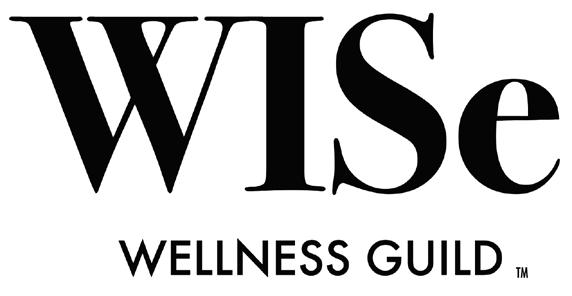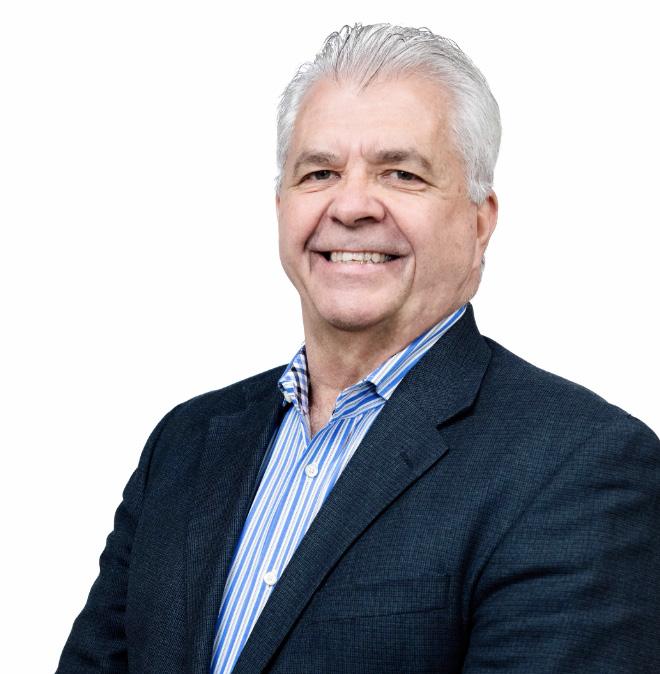Wellness and Sports Tourism: Enhancing Community Engagement with Economic Growth
Leveraging Wellness to Deepen Connections and Drive Economic Success
Sponsored By













PURPOSE


Leveraging Wellness to Deepen Connections and Drive Economic Success
Sponsored By















This white paper explores how implementing wellness and active living opportunities into a sports tourism strategic plan can enhance community engagement, elevate fan experiences, and drive economic growth. It provides strategic insights for sports tourism associations, rights holders, and municipalities to capitalize on wellness trends and effectively address the growing demand for holistic experiences in today’s society.
Community Engagement: Wellness programs (ie. active lifestyle, nutrition coaching, mental health support etc.) foster stronger connections between residents and visitors, enhancing the community’s social fabric and creating a sense of belonging.
Economic Growth: Cities that embrace wellness initiatives attract more tourists, increase local business revenues, and enhance residents’ quality of life. This integration leads to a more vibrant local economy and sustainable community development.
Fan Experience: Rights holders can enhance fan engagement through wellness-focused activities, creating memorable and enriching experiences that deepen loyalty and participation.
Municipal Strategy: An architected wellness strategy for cities supports infrastructure development, addresses social issues, and promotes economic development, making cities more attractive to both residents and tourists.
Lifestyle Wellness: There are 8 pillars of whole-self wellness that support a healthy and active lifestyle: 1) physical, 2) nutrition, 3) mental, 4) occupational, 5) financial, 6) spiritual, 7) environmental and 8) social. These integrated elements support the whole-human, with physical, nutritional and mental health being the most naturally aligned to sports tourism objectives.
that embrace wellness initiatives attract more tourists, increase local business revenues, and enhance residents’ quality of life.
This white paper is intended for sports tourism associations, rights holders, and city governments seeking to deepen community engagement, enhance fan experiences, and drive economic success through wellness initiatives. By leveraging these strategies, stakeholders can create more inclusive and appealing environments that benefit all community members.
The sports tourism industry is rapidly evolving, with wellness emerging as an additive differentiator in attracting and engaging both residents and visitors. As communities seek to create meaningful connections and vibrant experiences, integrating wellness engagement into sports tourism presents a significant opportunity for growth and development.
Live entertainment, such as theater, concerts, and sporting events, is booming as people seek connection to combat loneliness and drive a sense of community away from phone and computer screens. This trend underscores the increasing value people place on real-world experiences that enhance social bonds and community identity.

The sports tourism industry is rapidly evolving, with wellness emerging as an additive differentiator in attracting and engaging both residents and visitors.
Sports tourism is exploding at a rate of 17.7%, expected to reach $2.1 trillion by 2030 (1). When combined with the booming wellness industry, which is valued at $5.6 trillion (2), there is an incredible opportunity to create substantial community impact. By integrating wellness into sports tourism strategies, stakeholders can tap into these growing markets and create dynamic, engaging experiences that appeal to a broader audience.
In today’s world, wellness is no longer a luxury but a necessity. With increasing rates of burnout, stress, and social isolation, communities are searching for ways to enhance the quality of life and create supportive environments. Sports tourism offers a unique platform to deliver wellness opportunities that benefit individuals and communities alike.
The integration of wellness into sports tourism not only enhances personal well-being but also supports community cohesion and resilience. By prioritizing wellness, stakeholders can create environments that promote health, happiness, and connection, ultimately leading to more vibrant and sustainable communities.

Despite the growing awareness of the impact of the wellness industry, many sports tourism initiatives lack a comprehensive approach to integrating wellness into strategies. As a result, communities miss out on the potential benefits of enhanced engagement, economic growth, and improved quality of life. This gap highlights the need for innovative strategies that prioritize wellness and create more inclusive and engaging experiences.
Sports tourism organizations have an opportunity to further engage communities and attract visitors in a purposeful manner. Traditional approaches may fail to address the diverse needs and preferences of modern audiences, resulting in missed opportunities for connection and engagement. This lack of intentional engagement can lead to lower participation rates, reduced economic impact, and diminished community pride.
Sports event organizers, also known as rights holders, struggle to create memorable fan experiences outside of the competition that build legacy loyalty and engagement. Without a focus on wellness, these events may lack the depth and richness needed to foster long-term connections with participants and spectators. This can result in minimizing fan satisfaction and event attendance.
Sports tourism organizations have an opportunity to further engage communities and attract visitors in a purposeful manner.
Municipalities, on the other hand, miss opportunities to improve residents’ quality of life, address social issues, and drive economic growth. Without a dedicated wellness strategy, cities may fail to capitalize on the broader potential of sports tourism to enhance community well-being and economic development. This unintentional oversight can hinder efforts to create vibrant, thriving communities that attract residents and visitors.

80% of Employees Say Wellness Programs Impact Their Decision to Stay: Indicating the value of wellness in retaining talent and fostering community loyalty.
Numerous studies highlight the importance of wellness initiatives in enhancing community engagement and economic growth. For example:
• 77% of Employees Report Burnout: Highlighting the need for wellness initiatives to support mental and physical health. This statistic underscores the growing demand for environments that prioritize well-being and provide opportunities for relaxation and rejuvenation (3).
• 80% of Employees Say Wellness Programs Impact Their Decision to Stay: Indicating the value of wellness in retaining talent and fostering community loyalty. This finding emphasizes the importance of wellness in creating supportive, engaging environments that attract and retain residents and visitors. (4)

These findings underscore the potential of wellness-focused sports tourism activities to address pressing challenges and create positive outcomes for communities. By prioritizing wellness, stakeholders can create environments that support personal and community well-being, ultimately leading to more vibrant and sustainable communities.
Integrating wellness opportunities into sports tourism tactics can transform communities by enhancing engagement, boosting economic growth, and improving residents’ quality of life. This solution involves a multi-faceted approach that includes new partnerships with local businesses, technology integration, and wellness-focused events.
By amplifying wellness, sports tourism initiatives can create meaningful experiences that resonate with participants, spectators, and local communities. This approach not only enhances the appeal of sports tourism but also supports broader goals of community well-being and economic development.
Sports tourism thrives on community engagement through wellnessfocused events like the Kroger Wellness Festival, which unites families and fans with fitness activities, cooking demos, and holistic health experiences during a Cincinnati Reds home weekend. Similarly, national programs like NFL Play 60 and the NBA Team Fit Program inspire active lifestyles and promote wellness through interactive clinics, while Create & Cultivate Wellness Means Business connects industry leaders for workshops that elevate both personal and professional well-being.
The Kroger Wellness Festival is America’s largest health and wellness event, with 175+ sponsors engaging and educating over 200k+ attendees through live activations and sampling. The Kroger Wellness Festival celebrates physical, mental and emotional health for the whole family with fitness activities, panel discussions, cooking demos, exhibitions, classes and live music across 6 stages. This is often hosted during a Cincinnati Reds home weekend and attracts local and national attendees. Learn more about Kroger Wellness Festival.

By amplifying wellness, sports tourism initiatives can create meaningful experiences that resonate with participants, spectators, and local communities.


2. Create & Cultivate Wellness Means Business Industry experts, wellness practitioners, thought leaders gather to unpack how to navigate the wellness industry and tap into their own personal well-being practices with hands-on workshops, focused mentor sessions, invaluable business-building conversations, services and experiences from your favorite brands in the space, and networking opportunities aplenty. This event attracts those from across the country to participate, driven by their celebrity presence. Learn more about Create & Cultivate Wellness Means Business.
The NFL’s Play 60 initiative encourages kids to be active for 60 minutes a day. This program not only promotes physical activity but also incorporates educational elements to teach kids about healthy living, nutrition, and the benefits of regular exercise. Learn more about NFL Play 60.
The NFL’s Play 60 initiative encourages kids to be active for 60 minutes a day

The NBA Team Fit Program focuses on promoting healthy, active lifestyles for children and families. By hosting events that include fitness clinics, wellness workshops, and nutritional guidance, the program educates participants on the importance of staying active and making healthy choices. Discover the NBA Team Fit Program.
Rights holders can enhance fan engagement by integrating wellness initiatives into their affiliated events. By prioritizing the well-being of attendees, these experiences not only attract more participants but also foster a deeper connection with the brand.
By integrating wellness into sports tourism, communities can create distinctive offerings that resonate with modern audiences, enhancing their appeal and competitiveness in the tourism market.






Choosing destinations known for their wellness attributes can significantly enhance the legacy of community impact. By hosting events in locations that prioritize health and wellness, rights holders can promote sustainable and long-term benefits for the local community.
Unlike traditional sports tourism approaches, this wellness-focused solution emphasizes holistic well-being, addressing physical, mental, and social aspects of community life. It leverages cutting-edge technology and strategic partnerships to deliver unique, engaging experiences that set communities apart.

By integrating wellness into sports tourism, communities can create distinctive offerings that resonate with modern audiences, enhancing their appeal and competitiveness in the tourism market. This approach not only attracts incremental visitors but also fosters long-term loyalty and engagement, ultimately leading to more vibrant and sustainable communities.
To further enhance the wellness experience, consider hosting on-site workshops that focus on key aspects of well-being:
• Mental Health & Resilience: Equip participants with strategies to manage stress, build resilience, and maintain mental wellness.
• Injury Prevention: Provide insights and practices to help prevent injuries, ensuring participants can enjoy the event safely.
• Food as Medicine: Highlight the importance of nutrition and offer practical tips on using food to enhance health and performance.
Partnerships with Local Businesses: Collaborate with gyms, wellness centers, and health-focused restaurants to offer exclusive packages for sports tourists through a curated digital marketplace. These partnerships create comprehensive wellness experiences that support local economies and enhance visitor satisfaction.
Technology Integration: Utilize mobile apps and wearable technology to provide personalized wellness experiences and track engagement. Technology enables communities to deliver tailored wellness offerings that meet the diverse needs and preferences of visitors, enhancing the overall tourism experience.
Large-Scale Wellness-Focused Events: Host events that combine sports with wellness activities, such as yoga sessions, health expos, and community fitness challenges. These events provide opportunities for participants and spectators to engage in wellness activities, fostering connections and promoting well-being.
Speaker Series and Thought Leadership: Establish a position of wellness thought leadership in the community through speaker series and lighter touchpoints. This approach enhances community engagement and reinforces the value of wellness in sports tourism.
Playcation at Olympics: Brands have leveraged the Playcation concept to enhance fan experiences by integrating wellness into the Olympic experience, offering activities and services that prioritize well-being and create lasting memories.
vml.com/insight/playcations
Kroger Wellness Festival (Featuring the Manning Brothers): This event showcases the potential of wellness-focused sports tourism by offering a variety of wellness activities and experiences that engage participants, enhance community connections and attract visitors.
kroger.com/blog/health/the-kroger-wellness-festival

Nike RBI World Series Mental Wellness Activity Day: This initiative demonstrates the importance of mental wellness for sports tourism visitors, offering activities and experiences that support participants’ mental health and well-being.
mlb.com/news/nike-rbi-world-series-hosts-mental-wellness-activity-day
These examples illustrate the potential of wellness initiatives to create positive outcomes for organizations and communities, highlighting the value of integrating wellness into sports tourism.
1. Discovery: Conduct a comprehensive analysis of community assets & programming, unmet needs and wellness opportunities. This involves engaging stakeholders, including residents, local businesses, colleges & universities, local sports teams, clubs and tourism organizations, to identify priorities and opportunities for wellness integration.
2. Strategy: Develop customized wellness programs tailored to the specific needs of the community. This involves collaborating with local businesses and wellness experts to design offerings that align with community goals and preferences.
3. Design + Execute: Implement programs with targeted marketing and engagement strategies. This involves promoting wellness initiatives through various channels, including social media, local media, and tourism platforms, to attract participants and raise awareness.
4. Evaluation: Continuously monitor and adapt programs based on feedback and performance metrics. This involves collecting data on engagement, satisfaction, and economic impact to assess the effectiveness of wellness initiatives and inform ongoing improvements.


Develop customized wellness programs tailored to the specific needs of the community.


Resource Allocation: Securing funding and resources for wellness initiatives. This may involve seeking support from local businesses, tourism organizations, and government agencies to ensure sufficient resources for program implementation, including public and private grants.
Community Buy-In: Engaging residents and businesses to participate in and support wellness programs. This may involve building relationships with key stakeholders and demonstrating the value of wellness initiatives to secure their commitment and participation.
Measurement: Effectively tracking and measuring the impact of wellness initiatives on engagement and economic growth.
Measurement: Effectively tracking and measuring the impact of wellness initiatives on engagement and economic growth. This may involve developing metrics and data collection strategies to assess the success of wellness programs and inform decision-making.
Personnel: Wellness coordinators, marketing specialists, and event planners. These individuals play a crucial role in designing, implementing, and promoting wellness initiatives, ensuring their success and sustainability.
Tools: Mobile apps, wearable technology, and analytics platforms. These tools enable communities to deliver personalized wellness experiences, track engagement, and assess the impact of wellness programs.
Partnerships: Collaboration with local businesses, colleges & universities, local sports teams, clubs and tourism These partnerships provide valuable support and resources for wellness initiatives, enhancing their effectiveness and reach.
Integrating wellness opportunities into a broadened sports tourism strategy presents a powerful blueprint for enhancing community engagement, driving economic growth, and improving residents’ quality of life. By leveraging strategic partnerships, technology, and innovative wellness programs, sports tourism organizations, rights holders, and municipalities can create vibrant, thriving communities that attract visitors and support local economies.
Wellness initiatives foster social connections and community pride, attract visitors and support local businesses, and improve residents’ health and well-being. By prioritizing wellness, communities can create meaningful experiences that resonate with participants, spectators, and local residents, enhancing their appeal and competitiveness in the tourism market.
We invite sports tourism associations, rights holders, and municipalities to explore the transformative potential of wellness in their initiatives. Contact WISe Wellness Guild for expert guidance and support in implementing wellness strategies that drive success and community engagement.







Wellness initiatives foster social connections and community pride, attract visitors and support local businesses, and improve residents’ health and well-being.

WISe Wellness Guild is a consultancy and network of wellness brands, experts and resources aimed at helping humans thrive. We build healthy cities, brands and experiences to support the advancement of community impact and engagement. WISe was founded in 2019 by Stevi Gable Carr, a former Senior leader in CPG and Healthcare industries and current executive coach (ICF, IOC Harvard McLean Medical School) for high performing leaders. Stevi is a 35x keynote speaker and co-host iHeart Radio Wellness Wednesdays, featured in Forbes, Entrepreneur and Fortune Magazines and has been awarded for her leadership in wellness strategies, including Business Courier’s 40 Under 40, Women Who Mean Business and P&G Global Alumni Network’s Visionaries Under 40. WISe Wellness Guild offers strategic consulting, market intelligence, brand experience and leadership engagement. Key partners like Kroger Wellness Festival, P&G, TH Foods, Paycor, Gardenuity and Necco are just a few of the over 600+ businesses across all 50 states, nine countries that contribute to the rapidly growing $5.5 trillion wellness industry. Learn more at wisewellnessguildpartners.com
REFERENCES AND CITATIONS
1. Granview Research, as sited in Skift: Sports Tourism is an Economic Game Changer for the Travel Industry
2. Global Wellness Institute
3. Deloitte Workplace Burnout Survey
4. Global News Wire: Wellness Engagement
5. WISe Wellness Guild: Website 6. Forbes 7. Entrepreneur
8. Inc. Magazine


Stevi Gable Carr CEO, WISe Wellness Guild

Mike Millay CEO, Clancy’s Sports
As the only non-profit 501(c)3 trade association for the sports and events tourism industry in the United States, Sports ETA is the most essential resource for sports commissions, sports destinations, sports event owners, and industry partners. We believe sports tourism and the events that our members own and host have the power to transform society for the better. Our passion is to help sports events and tourism professionals achieve previously unimaginable levels of performance We do this by nurturing a community of smart, creative, and interesting people: our members. Visit sportseta.org.